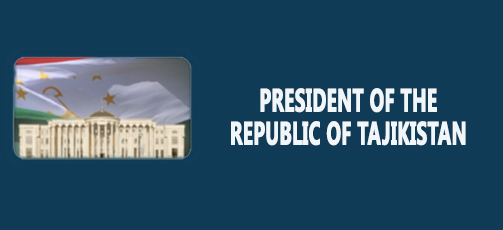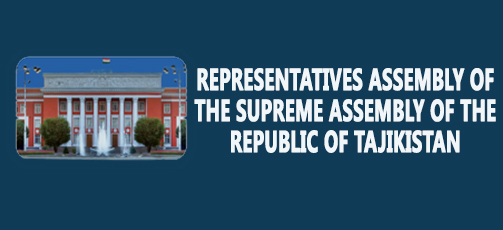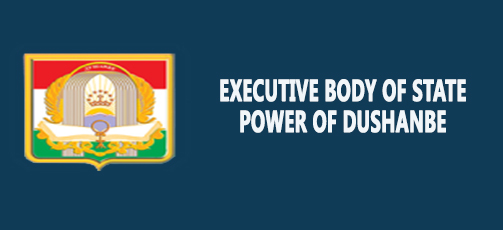Majestic and Tourist Site of Dushanbe Istiklol Square Wins the Hearts of Capital’s Residents and Guests
Read also
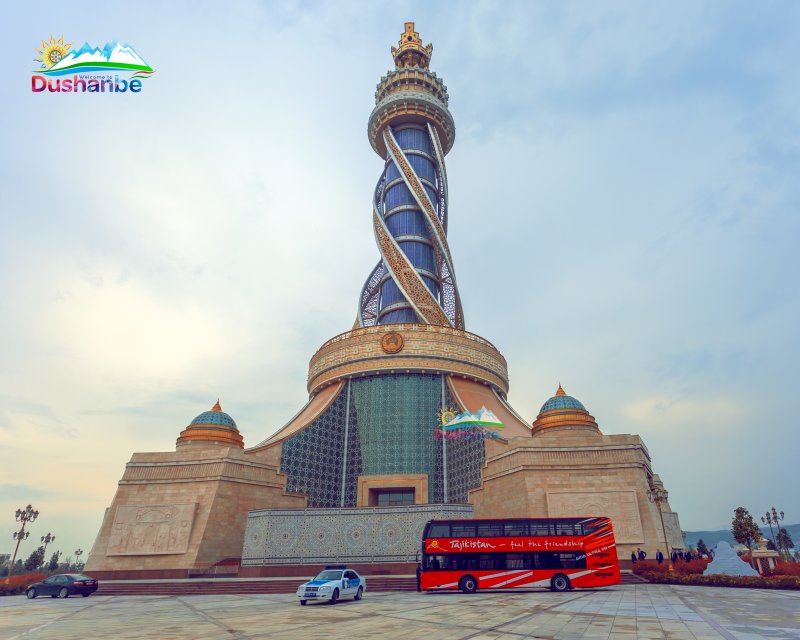
DUSHANBE, 13.05.2024 (NIAT Khovar) – Tourism is one of the important areas of the history of the state and nation, history, culture, nature and folk traditions, as well as its development contributes to the comprehensive development of economic sectors, including the service sector, everyday life and production.
That is why, per initiative of the President of Tajikistan Emomali Rahmon and Speaker of the National Assembly, Chairman of Dushanbe Rustam Emomali, the construction of large manufacturing enterprises, social institutions, sports grounds, modern parks and squares, service centers and tourist facilities has received unprecedented development in the capital.
It should be noted that Dushanbe is a tourist symbol of the country and favorable opportunities have been created for providing recreation and tourism to residents and guests.
In this regard, per initiative and with the support of the government, in September 2018 in the Chense city of Qingdao, at the summit of the World Tourism Federation, Dushanbe was accepted as a member of the Federation, which includes more than 130 cities around the world.
Khovar decided to prepare this material for the purpose of presenting the capital’s tourist sites in collaboration with the tourism development department of the administration of the Dushanbe Mayor.
Istiklol Square
One of the most majestic and tourist sites of the country’s capital is Istiklol Square. This facility was commissioned on September 8, 2022 by the President Emomali Rahmon.
Istiklol Square is unique in the region in its construction design and appearance, and its main goal is to protect the historical and cultural values of the Tajik people, embody important pillars of statehood, further enhance the sense of national identity and strengthen in the minds and consciousness of the country’s citizens, especially teenagers and youth, ideas of independence and freedom.
According to domestic and foreign experts and analysts, the initiators of this idea achieved their main goal. Because this complex with unique gardens and alleys has managed in a short time to become an excellent place to get acquainted with history and cultural values, as well as relaxation and entertainment for citizens and foreign guests.

Another goal of creating such a truly modern park with ample opportunities is to host all state and national events in it in the future. The total area of the park is 40 hectares and consists of the Istiklol tower, 7 carved wooden gates, a square for holding important state events, stands for performances, colored fountains, alleys with national ornaments, technical centers and other structures.
Istiklol Tower
In the center of Istiklol Square is the majestic Istiklol Tower complex. The total height of the complex is 121 meters. The height of the lower part of the complex is 30 meters and symbolizes the 30th anniversary of State Independence. The height of the upper part of the complex is 91 meters and represents the historical date of gaining State independence of Tajikistan in 1991.
The appearance of the complex is built in such a way that it resembles a shoot of a tree moving upward, and is an expression of the tree of life. On the roof of the tower there is a crown, which symbolizes the sovereignty, civilization and independence of Tajiks. The base of the complex is shaped like a sanctuary and consists of seven carved gates. The tower is surrounded by seven colored fountains and adds to its special beauty.
On the ground floor of the Istiklol Tower there are special corners for holding republican and international exhibitions. Currently, here has been opened a temporary exhibition on the topics of national clothing, folk crafts, stones of Tajikistan, musical instruments and Tajik national souvenirs.
Tajik National Clothing Corner
The first section of the exhibition presents national men’s and women’s clothing from various regions of Tajikistan. National clothing is one of the most important and unique pillars of Tajik culture, which we have inherited from the depths of history to the present day. Women’s clothing consisted of a dress, shoes, a scarf, neck and head decoration, a burqa and a blindfold.
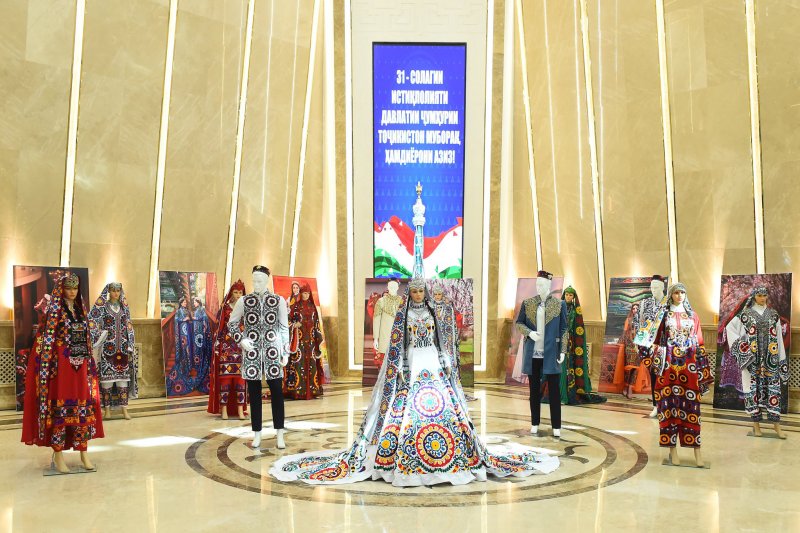
Along with the commonality in the decoration and embroidery of national costumes and headdresses, there are also distinctive details by which Tajiks from different regions can be recognized. One of the types of national floral embroidery is chakan embroidery, which is also known by the name of women’s dress.
The Aryan peoples used signs of the cross on their clothes, which were improved over time, and later they began to use new patterns, such as a circle representing the Sun — a symbol of light and heat, flowers and plants. Therefore, a large rose (with the image of the sun) is the main pattern of the chakan.
Pomegranate, ashtak, willow leaf, bodomak, kajak, tulip, basil, rooster’s crown, peacock’s tail, moon and stars, and sparrow’s foot patterns are also widely used. Traditionally, the colors chosen for making chakan women’s dresses were white, red and yellow. The chakan dress was essentially worn by women at weddings and holidays, especially on the ancient Tajik holiday of Navruz. It should be noted that in 2018, “Chakan, embroidery art in the Republic of Tajikistan” was included in the UNESCO register of intangible cultural heritage.
Tajik Souvenirs Corner (making knives, kundal, woodworking)
The next corner of the exhibition is dedicated to the art of Tajik folk crafts. Tajik souvenirs and examples of the ancient art of making knives, kundals, and woodworking are presented here. Since ancient times, Tajiks have decorated their homes and especially guest rooms. Because of this, woodworking, alabaster finishing and mirror decoration of rooms are very developed.
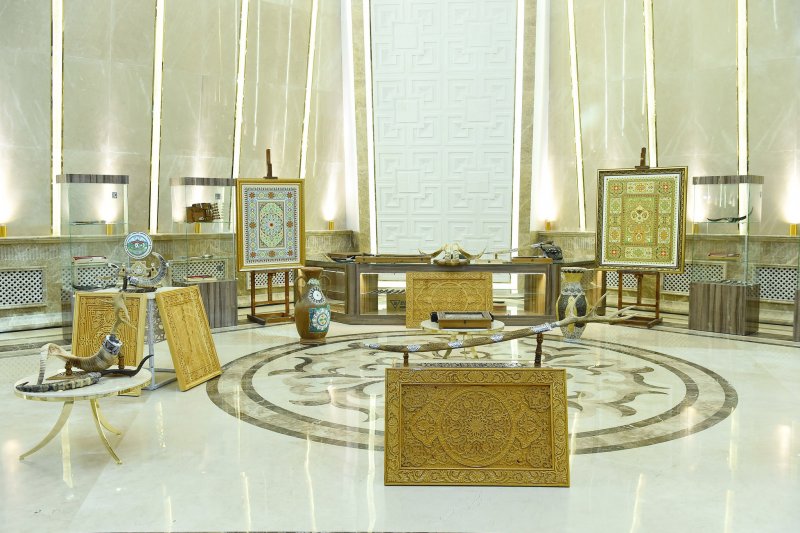
Also, terraces, corridors and columns of houses were decorated with wood carvings. In this corner you can see several examples of woodworking. One of the means of decorating the interiors of rooms — and especially royal palaces — was the creation of kundal, which was a very delicate art, gilding and decorating with precious stones. In order to make traditional knives, its handle was decorated with the horns of mountain goats, Marco Polo.
Stones of Tajikistan Corner
Since Tajikistan is a mountainous country, a special corner of the exhibition is dedicated to precious, semi-precious stones and minerals. The purpose of holding such a corner is to demonstrate various stones, such as lapis lazuli, carnelian, jasper, turquoise, quartz, onyx, marble and other decorative stones that are found in deposits of Tajikistan.
Decorative stones are offered as a variety of products, including beads, necklaces, earrings, bracelets, candlesticks, vases, tableware, chess sets, various paintings and other souvenir items and goods. These objects of art are works of Tajik masters. They reflect the history and culture of the Tajik nation.
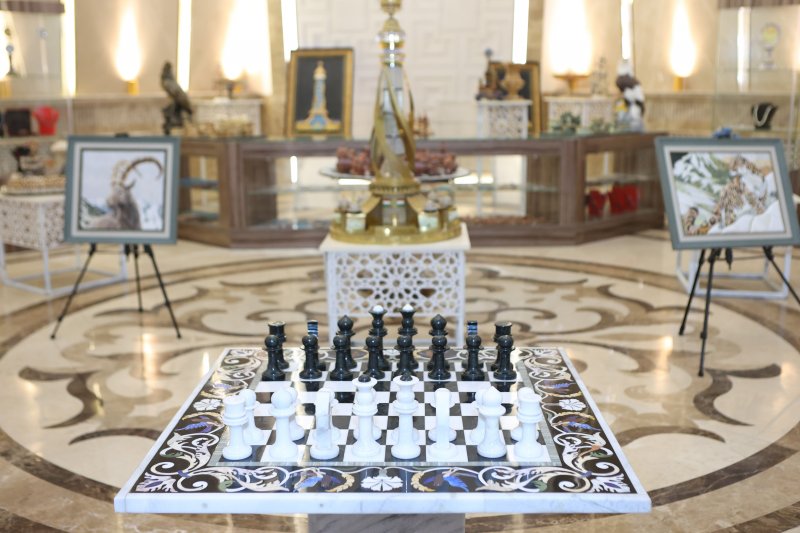
Musical Instruments Corner
The Tajik people have loved music since ancient times, so a special corner of the exhibition is dedicated to the national musical instrument. Here are musical instruments characteristic of Tajiks, such as dutor, setor, tanbur, rubob, domra, harp, lute, gizhzhak, flute, doira, tambourine, tablak and others.
The musical instrument developed in different Tajik areas depending on the region. Among musical instruments, the Badakhshon rubob, consisting of two handles, differs from other instruments and is an expression of the unique development of the musical culture of the Tajiks in this region.
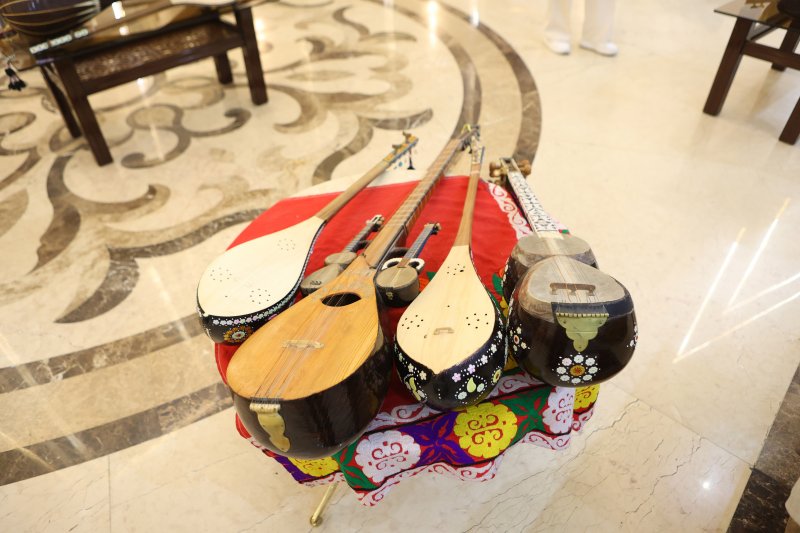
Symbolic Throne of the King Ismoil Somoni
In a special corner of the Istiklol tower there is a symbolic golden throne of King Ismoil Somoni, as the founder of the first Tajik state. The gilded throne is made of walnut wood with high craftsmanship and is completely gilded.
The King’s throne is crowned with a golden crown decorated with precious stones. Also on the throne is the scepter of the King, as a symbol of statehood.
In the background, the royal throne and crown are decorated with historical scenes from the walls of the ancient Tajik cities of Afrosiyob, Varakhsha and Ancient Panjikent, which were restored by Tajik craftsmen from semi-precious stones. Around the throne, seven golden keys symbolize the seven cities — Dushanbe, Sarazm, Khujand, Istaravshan, Hissor, Yamchun and Kulob.
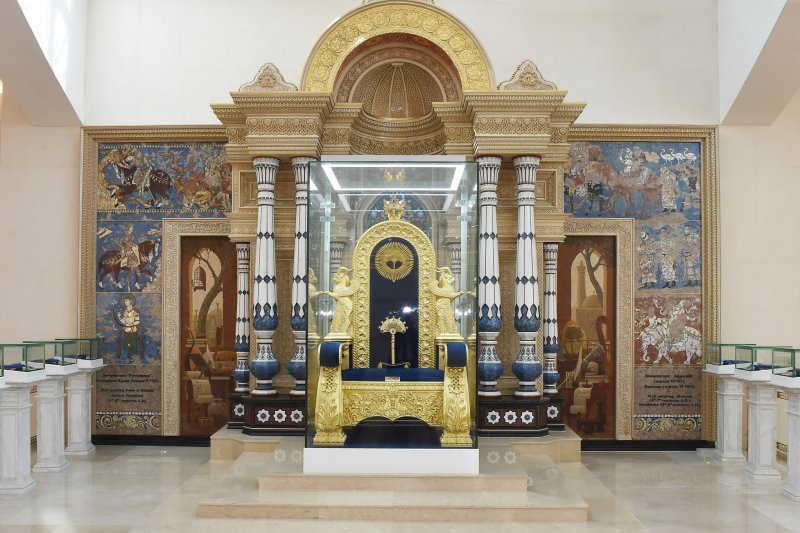
During the period of independence, the 5500th anniversary of Sarazm, the 3000th anniversary of Hissor, the 2700th anniversary of Kulob, and the 2500th anniversary of the Khujand and Istaravshan were solemnly celebrated at the international level.
A copy of examples of high jewelry from the Achaemenid times, known as the treasury of the Amu Darya — a golden bracelet and a golden chariot — was also restored and exhibited.
Paintings by Artists of Tajikistan
The art gallery is located on the second floor of the Istiklol Tower, where more than 70 paintings by Tajik artists are exhibited. These paintings are the work of artists from the Academy of Arts of Tajikistan. Also, most of the paintings are the work of young artists.
The subject of the paintings is devoted to the attractive and unique natural landscapes of Tajikistan, brilliant personalities in the history of the Tajik people and fateful moments in the history of Tajiks, the construction of great buildings during the period of independence and others.
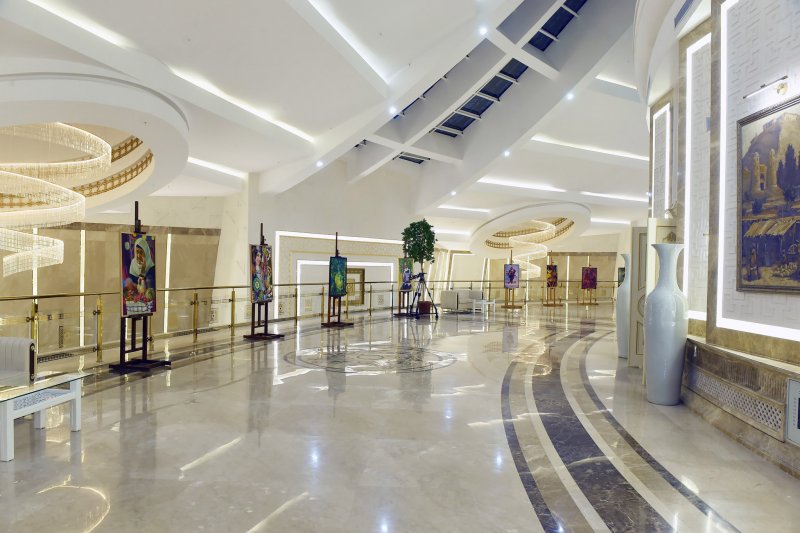
Dushanbe Museum
The museum is located on the second floor of the Istiklol Tower. The museum’s exhibits provide viewers with detailed information about the ancient history of Dushanbe and the development of the city in modern times. The placement of exhibits is carried out in accordance with historical chronology, and they are presented to viewers by placing them in display cases or photographs and images on the walls.
Dushanbe has an ancient history, as evidenced by Stone Age monuments — stone axes found in Luchobe and on the banks of the Dushanbe River. Individual showcases are decorated with artifacts from the Bronze Age period found at the airport turnoff, the ancient site of Dushanbe and other examples of crafts, such as a portrait of Dionysus and a woman’s earring in the shape of a sphinx near the amphitheater, as well as a bronze ax found in the Academic Town.
Archaeological excavations indicate that people lived in the territory of the current city of Dushanbe in the Stone Age. Archaeological finds confirm that Dushanbe was a major city in the Greco-Bactrian and Kushan eras, during the medieval period. The treasury of the Timurid mints, gold and silver exhibits, a map of archaeological monuments, photographs of the Hissor bey and amlokdor of Dushanbe in 1869-1921, Dushanbe and surrounding villages at the beginning of the twentieth century, various pots and ceramic shards tell visitors enough about the medieval history of the city.
Dushanbe in the new and modern era is represented by various artifacts displayed in showcases and numerous historical photographs mounted on the walls. From the presented exhibits and images, viewers will learn about the stage-by-stage development of the city, the first modern buildings, its proclamation as the capital of an autonomous republic and then a union republic, the first industrial and cultural institutions, and roads within the city.
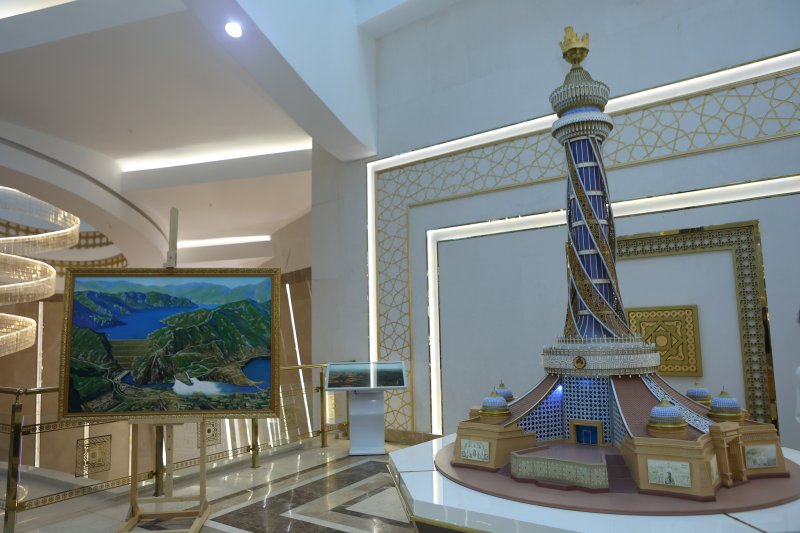
A separate corner is dedicated to the history of the war period of 1941-1945, decorated with photographs of the process of mobilization to the front, seeing off soldiers, the exploits of city residents in the rear, enterprises, institutions, evacuation hospitals, housing construction and workshops, photographs of soldiers from Dushanbe from the front, equipment, clothing and weapons soldiers, copies of leaflets, newspapers and magazines.
Various exhibits and historical photographs reflect the life of the city in subsequent years, including the creation of the Academy of Sciences of Tajikistan, asphalting the central street of the city, the construction of the first four-story residential building, the opening of the zoo, the new airport and train station of Dushanbe, the release of the first Pamir refrigerator, books about the city and photo albums.
A separate section of the museum was formed in the recent period of independence of Tajikistan. Historical exhibits and photographs show the radical change in the appearance of the city during the period of independence, especially in the last decade.
The opening ceremony of the architectural complex Ismoil Somoni, recreation and cultural parks, the opening of the National Museum of Antiquities of Tajikistan and the building of the National Museum, the National Library, the Palace of the Nation, Kokhi Navruz, Navruzgoh, Flag Park, National Emblem Park, the Poytakht complex, Dushanbe overpasses, modern residential buildings, presidential schools, kindergartens and other achievements of the independence period.
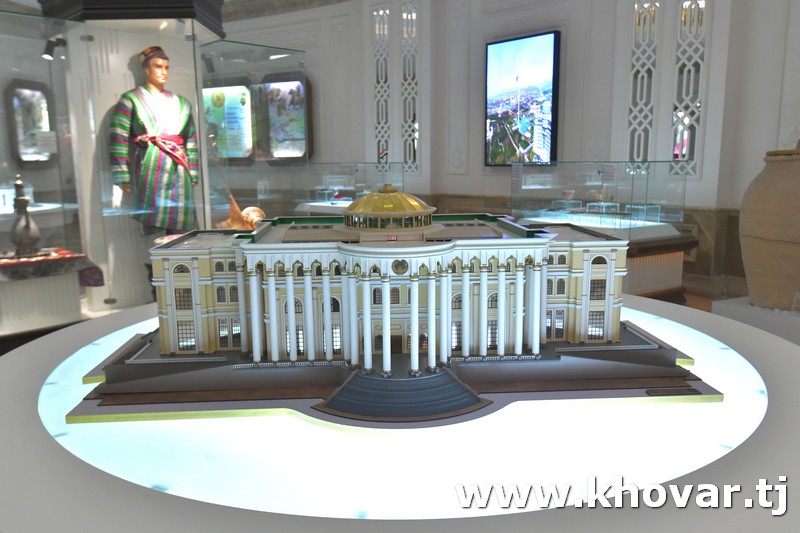
In the museum hall there are separate display cases for clothing from individual regions of the country, household items and musical instruments. In general, the museum is prepared as a spectacular and attractive place for residents, as well as foreign tourists.
Special Area for Sightseeing of Dushanbe
At a height of 91 meters, the Istiklol Tower has a special round platform, which offers a beautiful view of Dushanbe. This provides a great opportunity to see the geography of Dushanbe, which is located on the left and right banks of the Dushanbe River.
From this point, the appearance of the administrative and cultural buildings of the city center is clearly visible, especially the building of the Palace of the Nation, the National Flag and the Emblem of Tajikistan. In short moments you can see all districts of the city of Dushanbe, including Ismoil Somoni, Sino, Firdavsi and Shohmansur. In particular, the beautiful view of the Hissor mountain range, which stretches in the northern part of the city, is quite mesmerizing.
At night, the appearance of the city with its burning street lamps and multi-story buildings takes on a special beauty.

5D Cinema in Istiklol Tower
5D cinema is a kind of exciting new generation cinema. In a 5D cinema, the viewer can enjoy watching the latest films while sitting on chairs mounted on a dynamic platform. The movement of this platform depends on the movement of the camera on the film. Thanks to this technique, 5D technology allows the viewer to immerse themselves in the plot of the film and feel a real physical presence.
The 5D effect platform has two degrees of freedom: forward-backward and left-right with speed and intensity that depends on the film’s plot. The platform simulates the feeling of free fall, fast movement, sudden stop, jumping, collision and other movements depending on the plot of the film. The feeling of complete presence is achieved with the help of special equipment that creates wind and sprays water.
Akramkhoja AKBAR,
Khovar










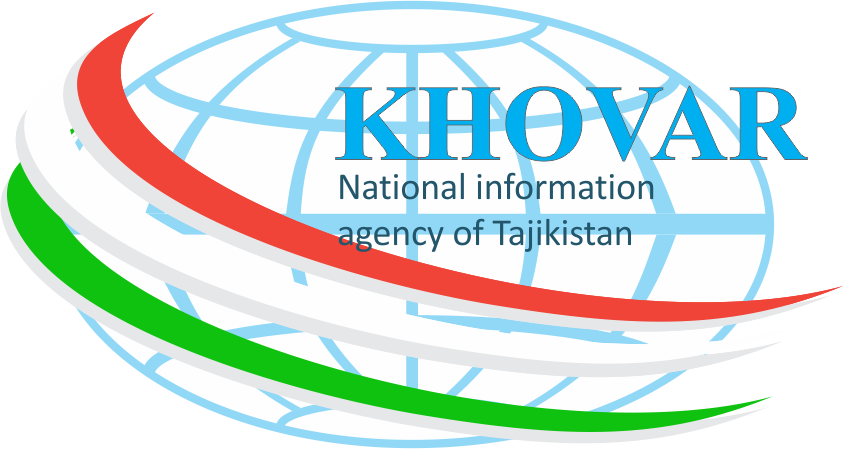
 Joint Statement by the Ministries of Foreign Affairs of the Republic of Tajikistan and the Kingdom of Bahrain on the Occasion of the 30th Anniversary of the Establishment of Diplomatic Relations
Joint Statement by the Ministries of Foreign Affairs of the Republic of Tajikistan and the Kingdom of Bahrain on the Occasion of the 30th Anniversary of the Establishment of Diplomatic Relations The Political School of the Leader of the Nation in the Context of the Activities of the People’s Democratic Party of Tajikistan
The Political School of the Leader of the Nation in the Context of the Activities of the People’s Democratic Party of Tajikistan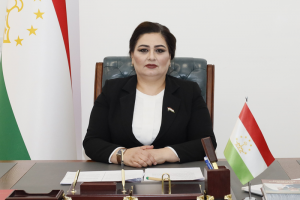 Modern Parliamentarism and the Role of the Asian Forum of Parliamentarians on Population and Development: From Experience Sharing to Practice-Oriented Policy Worldwide
Modern Parliamentarism and the Role of the Asian Forum of Parliamentarians on Population and Development: From Experience Sharing to Practice-Oriented Policy Worldwide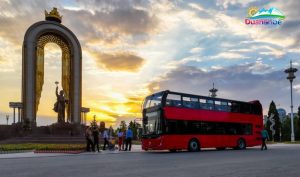 Dushanbe to Host Free “City Tour” on World Tourism Day
Dushanbe to Host Free “City Tour” on World Tourism Day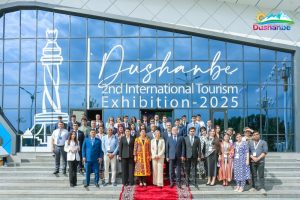 DITE-2025: Dushanbe Emerging as a New International Tourism Hub
DITE-2025: Dushanbe Emerging as a New International Tourism Hub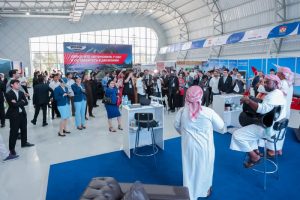 DITE-2025 Concludes with Strong International Participation and Key Industry Insights
DITE-2025 Concludes with Strong International Participation and Key Industry Insights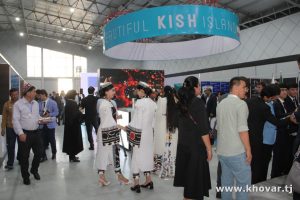 Dushanbe to Host Annual Tourism Exhibition
Dushanbe to Host Annual Tourism Exhibition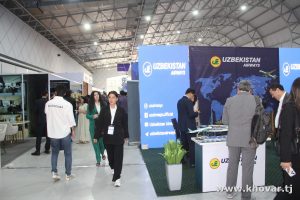 B2B Meetings and New Partnerships Take Center Stage at DITE-2025
B2B Meetings and New Partnerships Take Center Stage at DITE-2025 Over 200 Companies Participate in DITE-2025
Over 200 Companies Participate in DITE-2025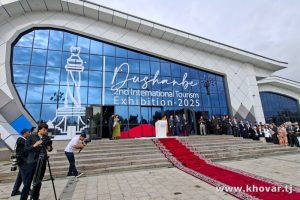 DITE-2025 Kicks Off at the Dushanbe Expo International Center
DITE-2025 Kicks Off at the Dushanbe Expo International Center Mayor of Dushanbe Rustami Emomali meets Mayor of Astana Zhenis Kassymbek
Mayor of Dushanbe Rustami Emomali meets Mayor of Astana Zhenis Kassymbek President of Kazakhstan Kassym-Jomart Tokayev awarded Rustam Emomali with the Order of Dostyk (Friendship) II degree
President of Kazakhstan Kassym-Jomart Tokayev awarded Rustam Emomali with the Order of Dostyk (Friendship) II degree









